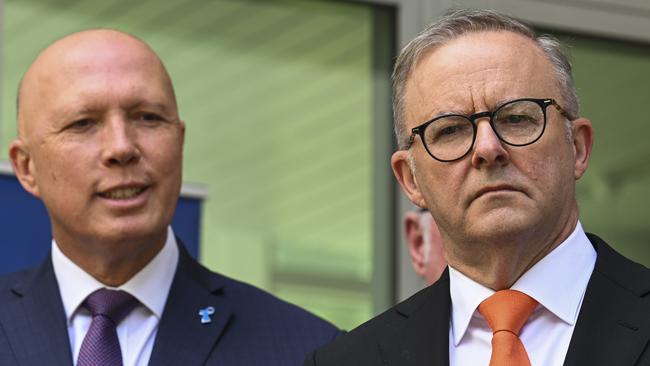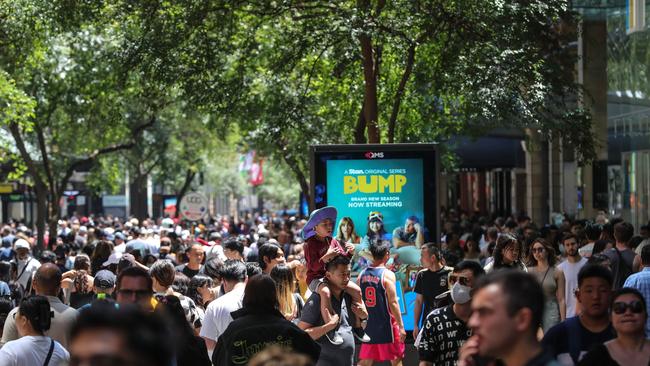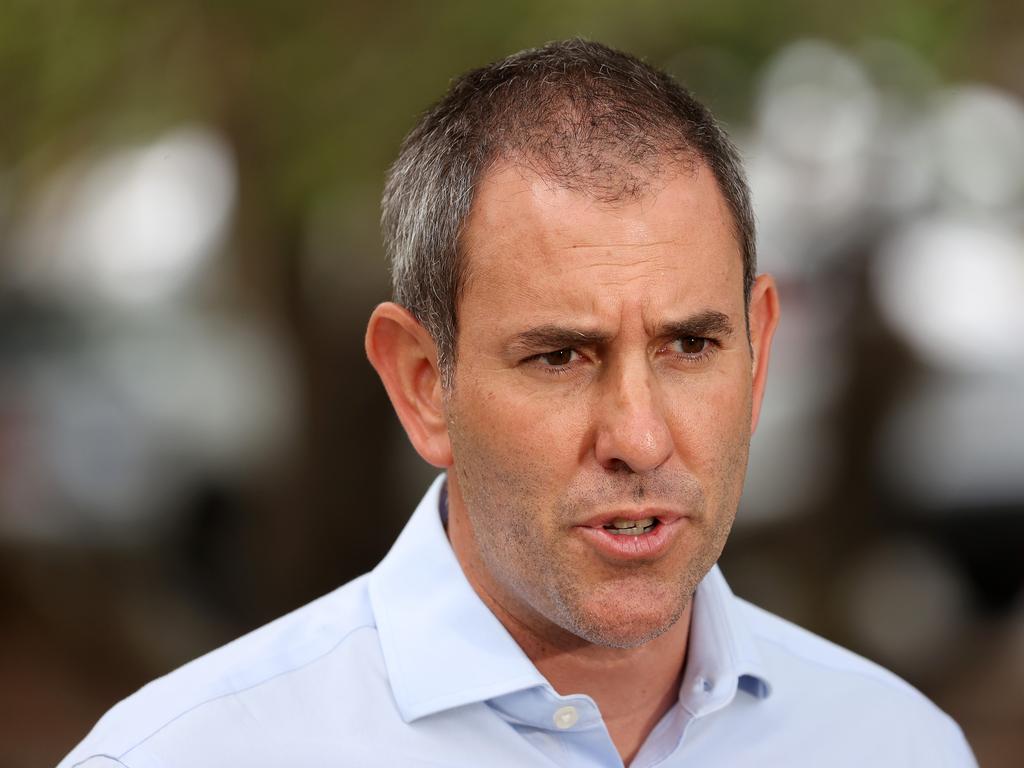Fraught year ahead needs leaders, not politics
But this requires politicians to step away from the “team red, team blue” mentality, journalists to stop horserace political coverage and voters need to park their self-interest gene.

This week’s inflation numbers for November surprised the market. They were expected to ease a little; instead, the 6.9 per cent annual rate returned to 7.3. Even adjusting for outlying inflationary goods, it still came in higher than anticipated.
The opposition was quick to blame Labor, rolling out that old chestnut that you can’t trust it to manage the economy and keep rates under control.
Such partisan trickery will be a feature of politicking this year, as the pressures that flow from rising interest rates and (likely) rising unemployment are increasingly felt.
In truth, however, neither side of politics could do much to avoid what is afoot. Which is not to suggest governments can’t make a bad situation even worse. That’s where the real political debate needs to be had: what impact does governmental decision-making have on what’s already unfolding?
Such a discussion brings the new industrial relations laws into focus. It can include debate about the safeguard mechanisms Chris Bowen announced this week. Indeed, tax and spending decisions contained in last year’s budget, as well as the one due in May, also play their part.
While the political class will do what it always does, most voters aren’t interested in their manoeuvring. They just want to get through the inevitably tough times ahead.
With inflation remaining stubbornly high, interest rate hikes in the first half of this year are inevitable. They probably already were, but there was some talk among economists that perhaps the Reserve Bank would hold off for a month or two to see what impact increases already announced have had.
That’s now off the table. Rates will go up in February, March and April unless the inflationary news from the holiday months of December and January paints a very different picture to what we know so far. Three consecutive 0.25 per cent cash rate increases will push the rate up to 3.85 per cent. At 3.1 per cent it’s already the highest it’s been in over a decade.
The 3.85 per cent marker is where many economists had predicted it would pause before eventually coming back down as inflation was brought under control. It now seems like another rise in the month of the budget will push the cash rate over the 4 per cent mark.
What does all this tell us? It’s pretty simple, really. The RBA will need to keep pushing the cash rate north until consumers get the message that they must curb their spending.

Remarkably, people are shelling out their earned dollars despite the increasing cost of living. Many are doing it by eating into their savings or, worse still, on credit – which is becoming more expensive to pay back.
Culturally, this is understandable: post-pandemic (not that it’s really post) Australians are travelling, consuming and partying like they haven’t been able to for years. But doing all of that puts more upward pressure on already high inflation. Something has to give, and sooner or later it will.
We are already seeing the heat coming out of the property sector. Higher interest repayments have slowed down the market, and will eventually cause mortgage holders to stop spending. Which is exactly what the RBA wants them to do, because that will in turn put some downward pressure on inflation.
It is a very delicate balancing act, because once that process properly starts (the evidence so far is that it hasn’t in any meaningful way) the decline in consumer spending will slow down the economy. When that happens people will lose their jobs and, depending on exactly how it happens, bad things will flow from it.
This is the soft-versus-hard landing discussion you often hear from economists. The RBA is trying to cause economic pain in order to lower inflation, but it doesn’t want to cause a recession, which could inflict severe economic pain.
The upside to such outcomes is that either way they put the inflation genie back in the bottle. But if unemployment has skyrocketed as part of that plan, the RBA will be rightly condemned for having mismanaged the slowdown with its monetary policy levers. And, inevitably, the political debate will see the opposition attempt to envelope the Labor government by attacking its fiscal decision-making as a contributing factor.
On Wednesday, former assistant treasurer, now shadow minister, Michael Sukkar, tweeted about Labor’s “inflationary budget”. Adversarial politics requires him to heap blame on the government. I blame consumers for not getting the message. People sitting around lamenting rising interest rates as they plan their next spend-a-thon need to consider what impact they are having on what’s unfolding.
Sadly, the Australians most hurt by high inflation on household goods aren’t the ones ignoring the warning signs. They don’t have the means to do what the middle and upper-middle class continue to do: keep on spending. They are struggling under the weight of higher grocery bills, which will keep on going up if the rest of us don’t rein in our discretionary spending.
The economic pain that comes from high inflation and the economic downturn that usually follows it hits lower socio-economic cohorts first before the pain is felt further up the line. Self-interest alone should see discretionary spending reined in.
While much of the ebb and flow of what’s economically ahead this year is out of the hands of our political decision-makers, how we fare into the medium and longer term is well within their remit. This is where fiscal decision-making – taxing and spending prudently – comes into the picture.
The political class needs to step up and legislate reforms that will enhance productivity and deliver a fairer and more sustainable tax system. Also find ways to prepare the policy mix for the effects of ageing. Start a serious debate about what we expect of government and if those expectations are realistic enough to be achieved.
Such an approach requires political leaders to step away from the “team red, team blue” mentality. Journalists need to move away from horserace political coverage. And voters need to park their self-interest gene when pork-barrelling (or the politics of fear) is used to win them over.
In other words, the political discourse needs to be lifted. Responsibility for that rests with all of us.
Peter van Onselen is a professor of politics and public policy at the University of Western Australia and Griffith University.







Hold on and buckle up, 2023 is going to be a rough economic ride for many Australians and businesses alike.